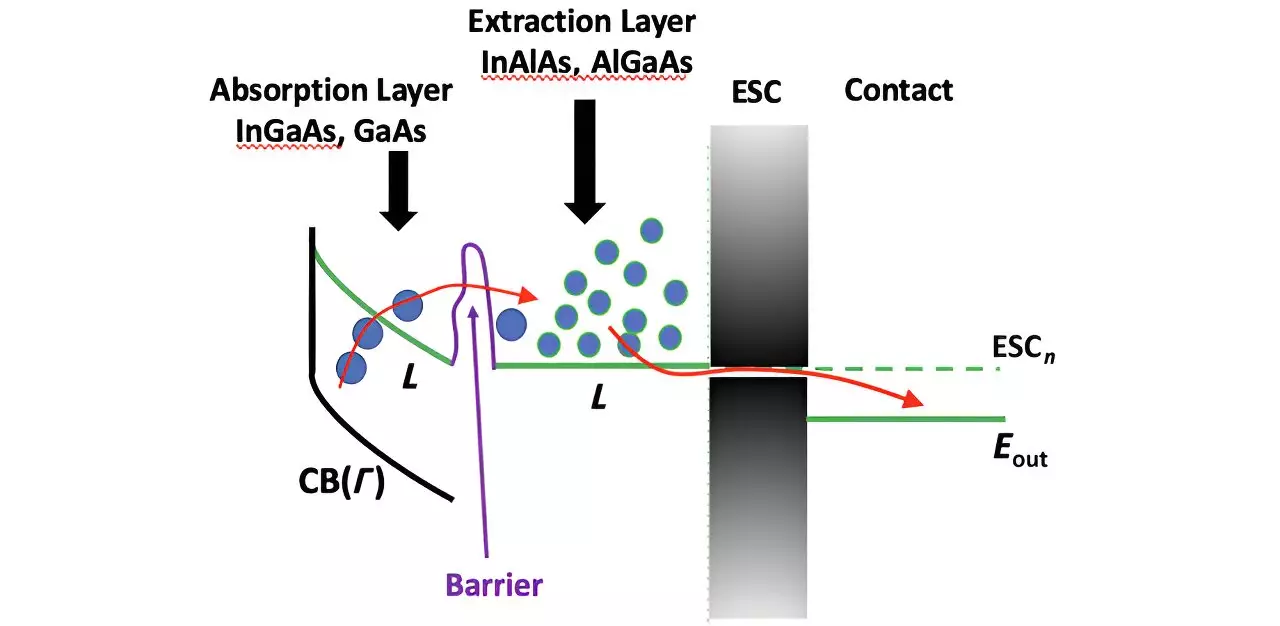Solar energy has emerged as a vital component in the global shift towards renewable resources, driving significant research efforts aimed at improving the efficiency of solar cells. Traditional silicon-based solar cells have a theoretical efficiency ceiling known as the Shockley-Queisser limit, which restricts single-junction cells to approximately 33% efficiency. In response, scientists have long turned their attention to innovative concepts such as hot carrier solar cells, which hold the potential to surpass these traditional barriers through more effective energy conversion. These cutting-edge cells harness the unique attributes of hot carriers—electrons that possess excess energy compared to their equilibrium state—in a manner that aims to significantly boost solar efficiency.
The core principle of hot carrier solar cells revolves around the ability to extract these energized electrons efficiently before they lose their excess energy through thermal relaxation. However, achieving this ambitious goal presents substantial technical hurdles. Researchers have identified that effectively extracting hot electrons necessitates a careful balance across various material interfaces within the solar cell. Although recent investigations have delved into the use of satellite valleys within the conduction band for temporarily storing hot electrons, practical execution remains fraught with difficulties stemming from parasitic barriers at the boundary between materials.
These barriers arise primarily due to misalignment between the energy bands of the materials involved. When electrons traverse from one material to another, they encounter these barriers in what is referred to as real space, as opposed to the more predictable realm of momentum space. Such mismatches create conditions in which electrons are forced to navigate complex band structures, whereby the efficiency of their transfer diminishes as a result of impediments created by even slight roughness at the interface.
A landmark study published in the Journal of Photonics for Energy has yielded significant insights into the dynamics governing electron tunneling across these material interfaces, specifically analyzing the role of evanescent states in improving transfer rates. Employing an empirical pseudopotential method, researchers were able to calculate energy bands in momentum space, aligning their findings with experimental data to elucidate the underlying physics that facilitates hot carrier extraction. The study particularly highlighted that the tunneling coefficients—key indicators of the ease with which electrons migrate—are notably higher in systems using indium-aluminum-arsenide (InAlAs) and indium-gallium-arsenide (InGaAs). Such enhancements can be attributed to the energy band mismatches that are detrimental to consistent electron flow.
Moreover, the analysis revealed that even minimal variations in interface roughness can significantly impair electron transfers, aligning with the observed inefficiencies noted in practical applications utilizing these material systems. These findings challenge researchers to not only improve materials but also to develop more precise techniques for constructing interfaces to mitigate energy losses.
Promising Approaches: AlGaAs and GaAs Systems
Nevertheless, not all hope is lost; alternative material combinations present a more optimistic scenario. Investigations into aluminum-gallium-arsenide (AlGaAs) and gallium-arsenide (GaAs) have revealed potential for exploiting the advantages of better energy band alignment. In these systems, tuning the aluminum composition within the barriers facilitates a degeneracy in the lower energy satellite valleys, which significantly enhances tunneling efficiency. The research indicates that the tunneling coefficient between AlGaAs and GaAs can reach as high as 0.5 or even 0.88, suggesting a markedly enhanced transfer process that could pave the way for the advent of valley photovoltaics.
Such advancements could allow hot carrier solar cells to exploit these more favorable characteristics for energy extraction. It is crucial not only to achieve high efficiency in energy capture but also to foster the conditions necessary for these hot carriers to be successfully stored and transferred. The interplay of conductivity and charge transport in high-electron mobility transistors may also provide valuable insights for optimizing these interactions in valley photovoltaics.
The future of solar energy technology rests on overcoming these complex hurdles, with hot carrier solar cells standing as a beacon of possibility. As researchers continue to refine material systems and better understand the physics underlying energy transfer, the dream of breaking historical efficiency limits becomes increasingly tangible. The journey may be fraught with challenges, but through innovation and collaboration, the potential of hot carrier solar cells could soon be realized, setting a new standard in sustainable energy solutions worldwide. If unlocked effectively, this technology could reshape the future of solar power, providing cleaner energy and reducing dependence on fossil fuels in the quest for a sustainable planet.


Leave a Reply